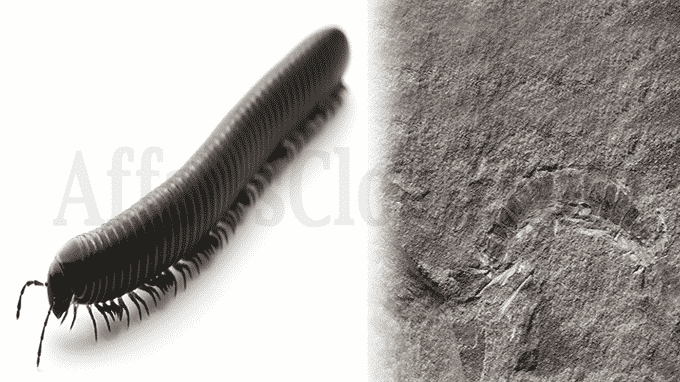 On May 31, 2020 According to the research published in the journal Historical Biology, fossilized millipede-like Silurian Period creature called Kampecaris obanensis(approximately 450 million years old) is unearthed on the island of Kerrera in the Scottish Inner Hebrides(Scotland), which is likely to be the world’s oldest-known land animal.
On May 31, 2020 According to the research published in the journal Historical Biology, fossilized millipede-like Silurian Period creature called Kampecaris obanensis(approximately 450 million years old) is unearthed on the island of Kerrera in the Scottish Inner Hebrides(Scotland), which is likely to be the world’s oldest-known land animal.
Gist about the Kampecaris obanensis
- Kampecaris obanensis is about an inch(2.5 cm) long with a segmented body, resembling modern millipedes. It is not ancestral to millipedes alive today, Its legs were not preserved in the fossil.
- It was an arthropod, a broad group that includes insects, spiders, millipedes, centipedes and crustaceans like crabs and shrimp.
Major Highlights of the research
i.Fossils of the oldest-known plant with a stem, called Cooksonia, were also found in the same ancient lake region as Kampecaris.
ii.At the beginning of about 540 million years ago, life first evolved in the world’s oceans, with an explosion of diversity.
iii.It took some time for life to emerge onto land, beginning with plants like mosses approximately 450 million years ago. The later emergence of plants with stems like Cooksonia helped complex terrestrial ecosystems.
iv.About 375 million years ago, the 1st land vertebrate amphibians evolved from fish with brawny fins that inhabited shallow waters. The ancestors of the reptiles, birds and mammals alive today including our species showed up about 300,000 years ago
About Scotland:
Capital– Edinburgh
Currency– Pound Sterling




